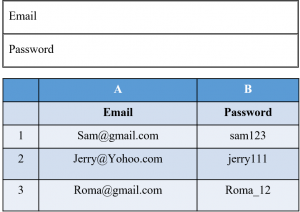1. Linear Scripting:
Is nothing but 'Record and Playback', simplest among all other. Here tester can manually record each step like user navigation, input, verifying result. And then can play back recorded scripts as per requirement.
2. Modular Framework:
In this approach, scripts can be created and executed using reusable components. Here we can create small, independent scripts that represent modules, sections, and functions of the application-under-test.

3. Library Architecture Framework:
It divides the application-under-test into procedures and functions in its place of scripts. This framework requires the creation of library files that represent modules, sections, and functions of the application-under-test. These library files are then called directly from the test case script.

4. The Data-Driven Testing Framework :
Test case logic resides in Test Scripts, the Test Data is separated and kept outside the Test Scripts. Test Data is read from the external files (Excel Files, Text Files, CSV Files, ODBC Sources, DAO Objects, ADO Objects) and are loaded into the variables inside the Test Script. Navigation through the program, reading of the data files, and logging of test status and information are all coded in the test script.

5. The Keyword-Driven or Table-Driven Testing Framework :
As name suggests, Keyword is nothing but a code which represents some actions, say 'Register'. This framework requires the development of data tables and keywords, independent of the test automation tools used to execute them and the test script code that "drives" the application-under-test and the data. Keyword Driven Testing Framework is suitable for automation of small applications.

6. The Hybrid Test Automation Framework:
The most commonly implemented framework is a best combination of all the techniques. Hybrid Framework combines the best of Keyword Driven and Data Driven frameworks. Tests are fully scripted in a Hybrid Testing Framework thus increasing the automation effort. Hybrid Testing Framework also implements extensive error and unexpected windows handling. It is used for automation of medium to large applications with long shelf life. Above is a brief description about automation framework types. You can choose any framework as per your project requirement. Automation Framework is the practice of keeping all reusable, common components in one place constructing them as a platform to execute your automation scripts and all application specific data are passed as arguments to those functions.